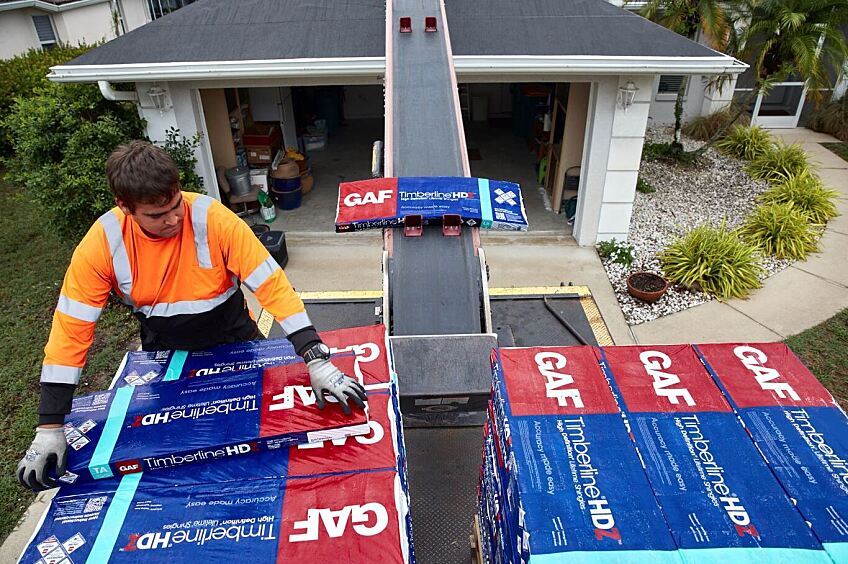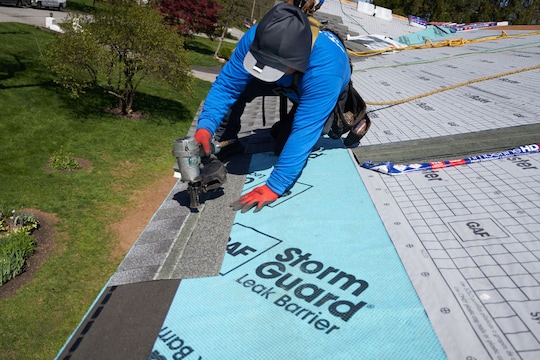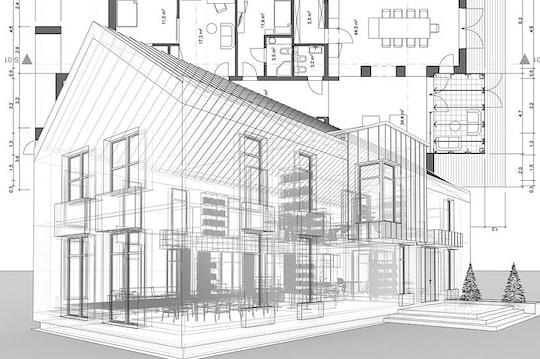
First and foremost, a roofing job requires two things: workmanship and materials. You can't oversee a successful roofing project without both. If you want to impress your customers with a job well done, it's essential to have all the right materials, make sure you have enough of them- and to ensure that they are installed properly.
This roofing materials list can help you ensure you have everything you need to complete your next project.
Sheathing
Roof sheathing or decking is the wood foundation layer that contractors use to attach shingles and other roof coverings to the home. Sheathing is a critical component of an overall roofing system. This part is commonly made from plywood or OSB and is crucial to provide a structural substrate for the installation of your roofing system. Sheathing is necessary for a roof replacement or repair project if there is a damaged area of the wood deck that needs to be replaced.
Roof Underlayment/Deck Protection
Roof underlayment helps to prevent wind-driven rain from infiltrating the roof system. For example, GAF Tiger PawTM Premium roof deck protection is a protective underlayment added above the sheathing and below the roofing shingles to help keep the roof system dry and strong. You'll need enough underlayment to cover the entire roof surface. It is sold in rolls, so check how much surface area each roll covers and double-check the roof's measurements before buying. To properly install the roof deck protection, you'll want to make sure to purchase enough plastic cap nails or plastic cap staples.
Roof Leak Barrier
Roof Leak Barrier helps protect the vulnerable areas of the roof like the eaves and valleys. This roofing product, like GAF WeatherWatch® mineral-surfaced leak barrier, is crucial to install in areas with cold weather at the eave, valley, around penetrations and other vulnerable areas. This will help prevent damaging leaks caused by ice dams or wind-driven rain.
Shingles
Shingles are what cover the roof to help protect the entire structure underneath it. It goes without saying you'll need enough shingles to cover the entire roof surface. While it may seem overwhelming to ensure you order the proper amount of shingles, there are tools available to help you with this process. For example, GAF QuickMeasure provides for quick and accurate measurements that help you to better meet the needs of your clients. You should also account for a waste of approxmately 10%, since you may need to cut shingles to accommodate roofs with a lot of valleys and hips. Extra shingles are good to have on hand in case any future repairs are needed.
Starter Strip Shingles
Starter strip shingles are the first set of long rectangular shingles that get installed around roof edges at the eave and rake edges of the roof to help prevent shingle blow-off. Be sure to check with your roofing manufacturer, as some shingles may require a specific starter strip product to be used with the specific shingle you're installing.
Hip and Ridge Cap Shingles
The hip and ridges of a roof can be vulnerable to wind and wind-driven rain due to the intersection of roof planes. This is where hip and ridge cap shingles come into play. These shingles are installed along these areas to help protect and provide an elegant finishing touch.
Flashing
Flashing is an essential roof component that helps redirect water away from areas like the chimneys, pipes, valleys, edges, and walls so make sure you have sufficient roof flashing to cover all vulnerable areas. Products such as GAF's Master Flow® Roof Flashing can help protect the area around roof pipes. If you've seen the roof in person, you may have an idea of how much you need to install, but you can also utilize tools such as an estimating app to ensure you're providing the homeowner with an accurate estimate.
Roof Ventilation
Roof vents are a vital piece of a roof's ventilation system. To function, an attic ventilation system must be balanced, with equal amounts of air coming in and going out. This continuous, balanced flow of air helps to reduce overheating and moisture build-up, which can result in ice damming and damage to your roofing system.
Fascia Board
The fascia board is another helpful component of the roof frame. It's placed at the end of the rafters or trusses and helps protect them against water damage. Gutters get hung from the fascia board, which is commonly made of wood or composite boards. If there is damage to existing fascia boards, they should be added to your roofing materials list in order to be replaced.
Roofing Nail Gun and Nails
You can't install shingles without a nailer or nails. While you could arguably use a hammer, a roofing nailer speeds up the process tenfold. There are specific code requirements for the roofing nails used, so be sure you are aware of these requirements before making your list. Once you know what the requirements are, you may want to consider buying in bulk. You can never have too many nails as a roofer!
Heavy-Duty Roofing Knife
A roofing knife is easy to forget, but you won't know how convenient it is until you don't have it with you. When you need to cut through shingles or other tough materials, these tools help maintain your grip, prevent slipping, and help keep your hands safe. Not just any old knife will work—get a specialized knife built for the task.
Roof Ripper
This roofing materials list wouldn't be complete without mentioning a roof ripper. One of the hardest aspects of roofing can be removing the existing roof. A roof ripper can easily tear off shingles, shakes, tiles, and underlayment. When you want to quickly remove shingles that just aren't coming off, it can save you time and effort.
How to Accurately Account For Materials
Large overages, or being short on material, are common among roofers. Roofing materials typically sell by the square, so you may need to buy more shingles than a customer actually needs to account for waste.
Also, factor in the risk for error when making calculations, such as the amount of materials you might need for steep roofs—incorrect estimates are bound to happen at some point.
You can take advantage of digital tools and services to help you get more accurate measurements, and in turn avoid overages or shortfalls. Aerial roof measurement services, like GAF QuickMeasure, are accurate, fast, and provide you with the roof measurements you need. The tool also includes a complete list of materials you'll need for the job.



